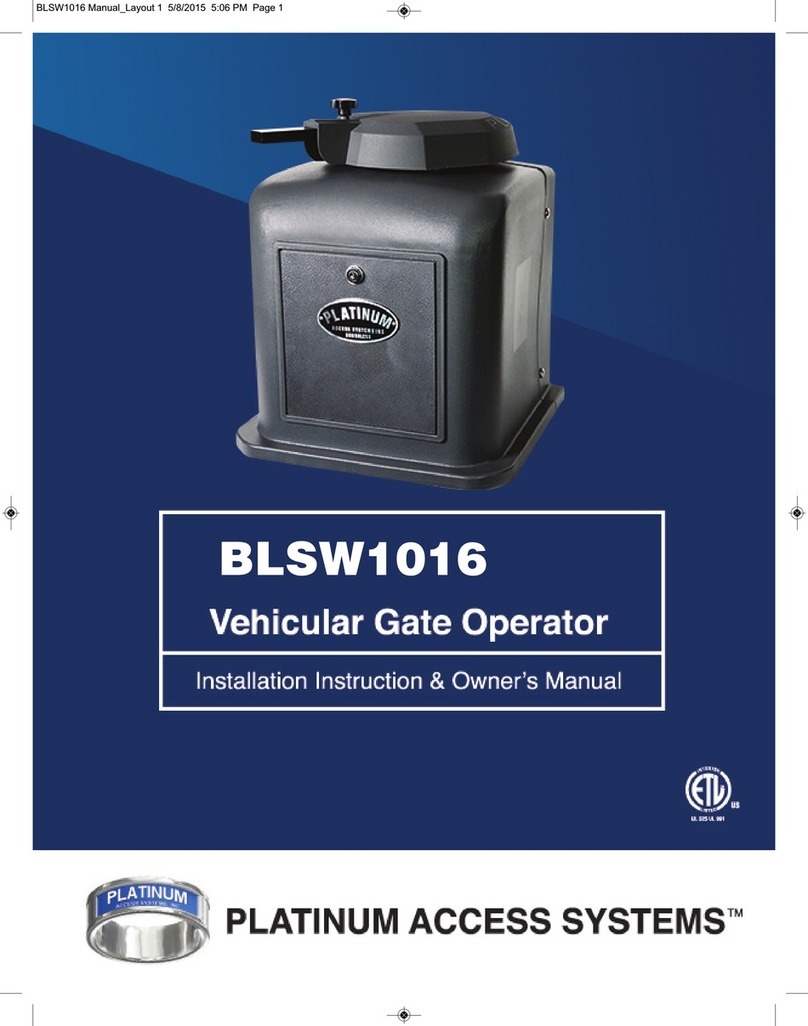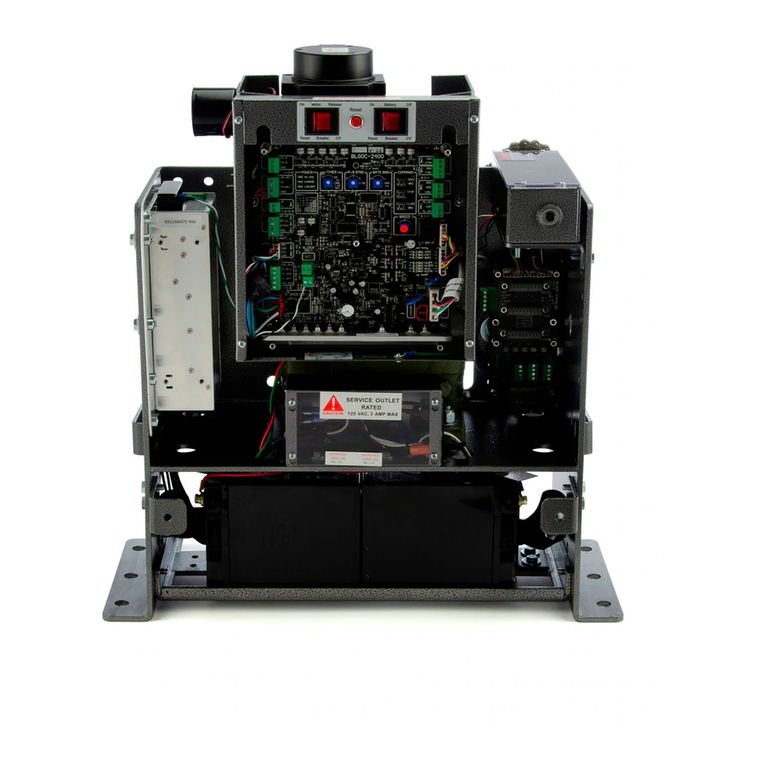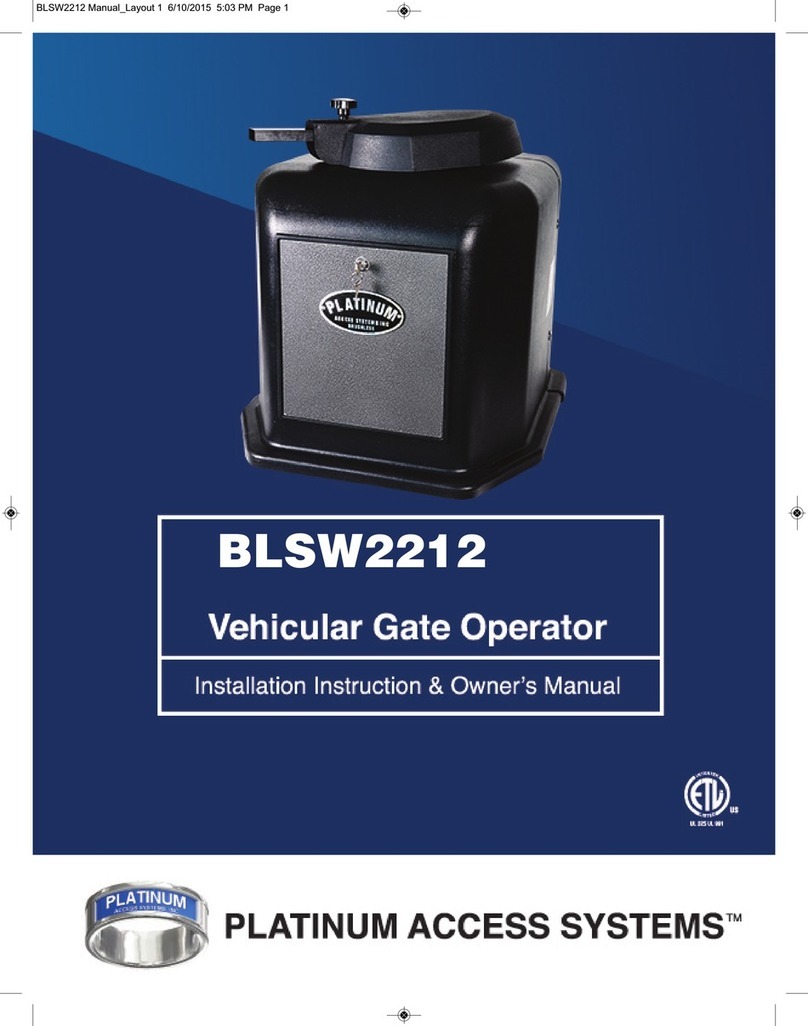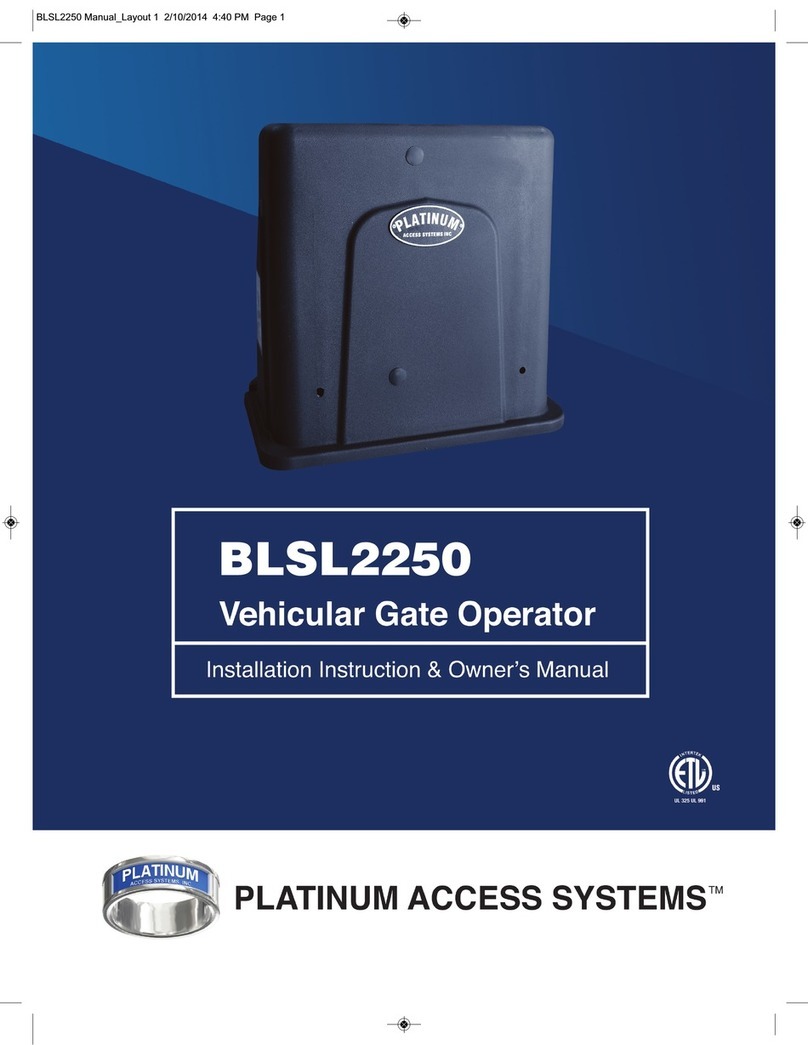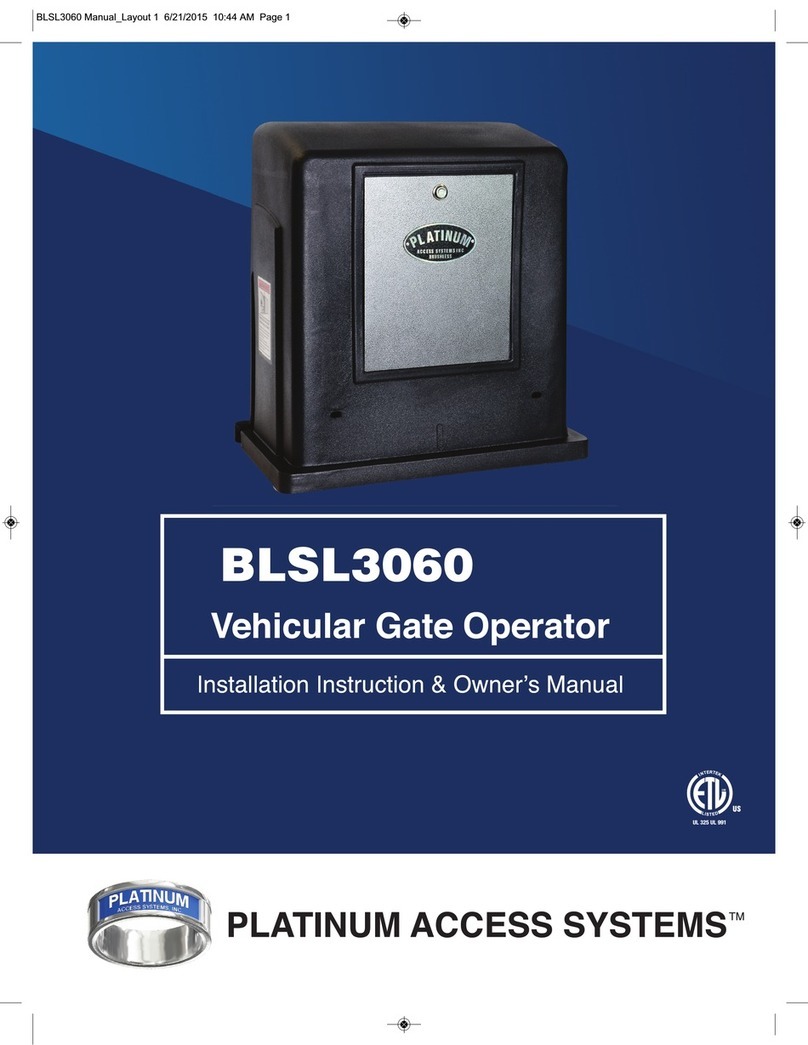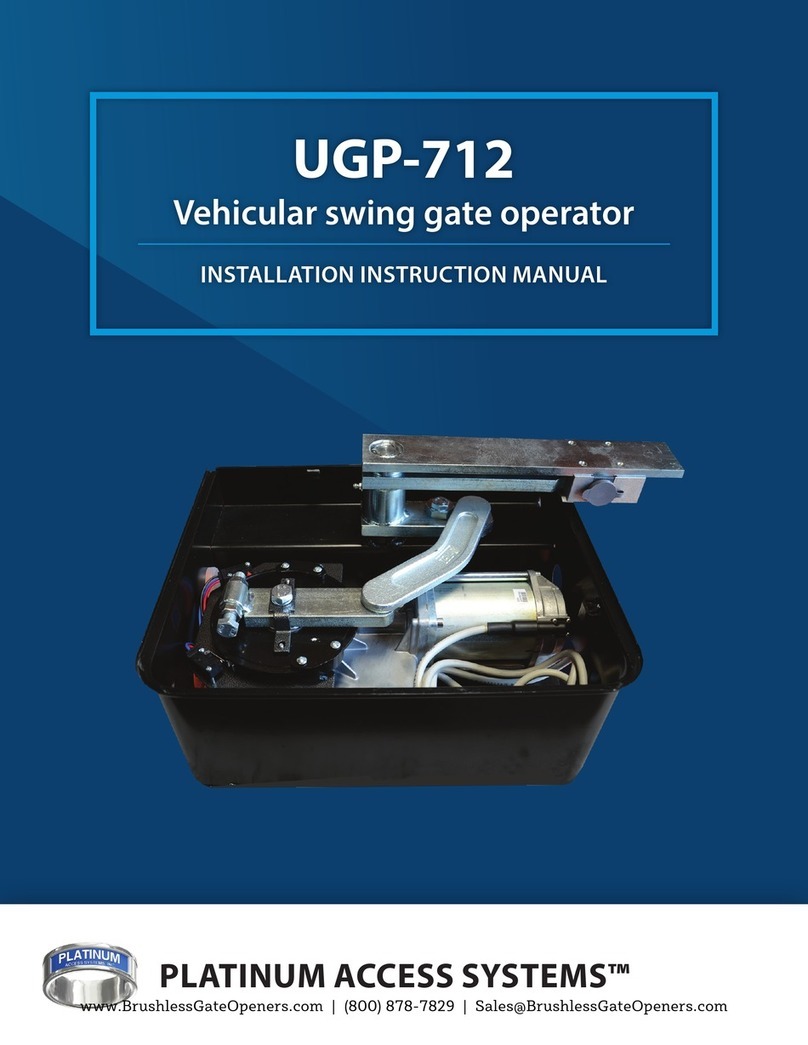IMPORTANT INSTALLATION INSTRUCTIONS BY UL STANDARDS:
(CONTINUED FROM PREVIOUS PAGE)
4. The gate must be properly installed and work freely in both directions prior to the installation of
the gate operator. Do not over-tighten the arm clamp to compensate for a damaged or poorly
maintained gate.
5. The gate operator controls must be placed so that the user has full view of the gate area when
the gate is moving and away from the gate path perimeter.
6. Controls intended for user activation must be located at least six feet (6’) away from any moving
part of the gate and where the user is prevented from reaching over, under, around or through
the gate to operate the controls and shall be at least (5’) from the ground as to be out of reach of
children. Outdoor or easily accessible controls shall have a security feature to prevent unauthor-
ized use. Also:
7. Ensure the Stop and/or Reset button must be located in the line-of-sight of the gate following
rules above. Activation of the reset control shall not cause the operator to start.
8. A minimum of two (2) Warning Placards shall be mounted, one on each side of the gate where
easily visible.
9. A gate operator utilizing a non-contact sensor such as an Photo beam or like in accordance
with section 31.1.1 of the UL325 standard:
a. Reference owner’s manual regarding placement of non-contact sensor for each type of ap-
plication.
b. Care shall be exercised to reduce the risk of nuisance tripping, such as when a vehicle trips
the sensor while the gate is still.
c. One or more non-contact sensors shall be located where the risk of entrapment or obstruction
exists, such as the perimeter reachable by a moving gate or barrier.
d. We recommend (EMX IRB-325) use as a fail safe photoeye to comply with UL325.
10. A gate operator utilizing a contact sensor such as an edge sensor or like in accordance with
section 31.1.1 of the UL325 standard:
a. A hard wired contact sensor shall be located and its wiring arranged so the communication
between the sensor and the gate operator is not subject to mechanical damage.
b. A wireless contact sensor such as the one that transmits radio frequency (RF) signals to the
gate operator for entrapment protection functions shall be located where the transmission of
the signals are not obstructed or impeded by building structures, natural landscaping or simi-
lar obstruction. A wireless contact sensor shall function under the intended end-use condi-
tions.
c. One or more contact sensors shall be located on the inside and outside leading edge of a
swing gate. Additionally, if the bottom edge of a swing gate is greater than 6 inches (152 mm)
above the ground at any point in its arc of travel, one or more contact sensors shall be lo-
cated on the bottom edge.
d. The following model(s) are comply with UL 325: Miller Edge model MGR20 or MGS20 edge
sensor.
WARNING – To reduce the risk of severe injury or death to person, please to follow these instructions:


